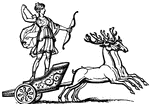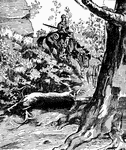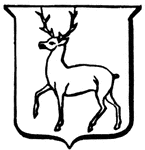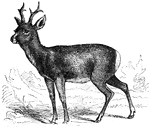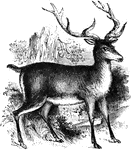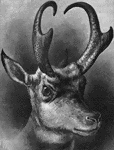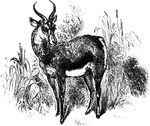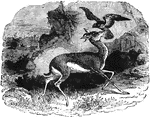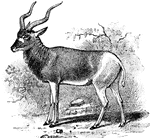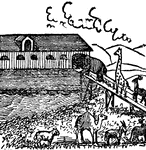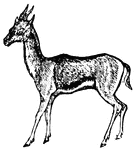
Gazelle
Most gazelle are found in Africa. Some inhabit SW Asia and N. Africa. They are graceful and swift runners…

Musk Deer
The musk deer receives its name from the valuable drug it produces. Its numbers have been greatly reduced…

Grizzly Bear
The grizzly bear is the most fierce and powerful of the North American bears. It can weigh up to 800…
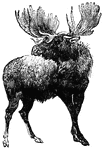
Moose
One of the largest species of hooved mammals in the deer family. Known as the moose in North America,…
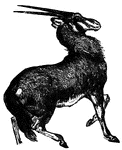
Oryx
The oryx is a native of S. Africa. It is one of the fastest animals in that region. It is similar in…
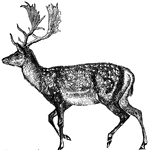
Deer
The fallow deer may easily be known from the stag by its smaller size and flat horns, and the white…

Jersey Cattle
"The Jersey cattle has a small deer-like head, muzzle fine and dark and encircled by a light color,…
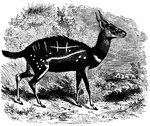
Guib Antelope
"About the size of a common deer, of a reddish-fawn color, but marked with white stripes along the back…
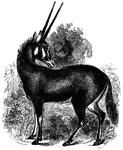
Gemsbok
"It is a heavy stout animal, about five feet in length, and three feet two inches high at the shoulder;…

Blauw-Boc
"Is six feet long, three feet seven inches high, has round horns curved backward, and is of a blu-ish…
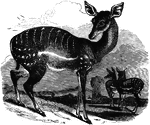
Female Gazelle
"Is one of the most celebrated of antilopes; it is about two feet high at the shoulder; its limbs are…

Ariel Gazelle
"Is one of the most celebrated of antilopes; it is about two feet high at the shoulder; its limbs are…
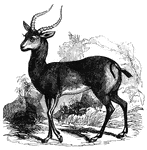
Pallah
"Four and a half feet long and three high. The general color is a deep red, and underr parts being white.…
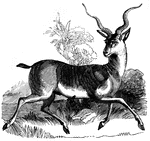
Common Antelope
"Its length is four feet; its height two and a half; the legs are long and delicate; the body round,…

Addax
"The body is five feet long, and height three feet. The general color is gray-ish-white, though the…
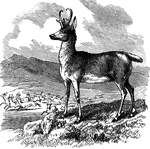
Prong-horn
"The only kind of antilope found on this continent. It differs from all the other members of the tribe…
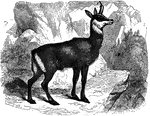
Chamois
"The horns are six or seven inches long, the body about three feet three inches, and the height at the…
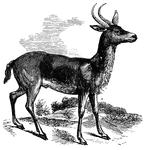
Inghalla
"Is of a deep reddish-fawn color; its lives in pairs or small families, frequenting the reedy borders…
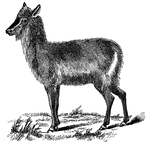
Equitoon
"Is of a pale brown color, lives in small herds on the Gambia, and resembles the gazelles." —…
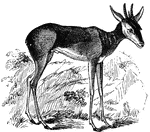
Madoqua
"Is probably the smallest of the horned quadrupeds, it being two feet long and fourteen inches high.…
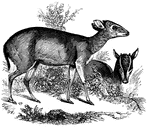
Kleene-Boc
"Is about one foot high at the shoulders; the horns one and a half inch long in the male, three quarters…
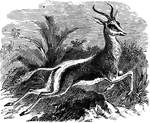
Spring-Boc
"Is perhaps the most graceful and the most beautifully varied in its colors, of all the antilope. imagination…
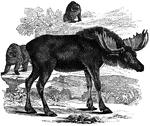
Moose
"This animal is the largest of the deer kind, being taller than thehorse. Its horns weigh fifty or sixty…

American Elk
"is a large and noble species, resembling the red deer of europe; is has tall, round, branching horns,…

Red Deer
"The horns of the male are lofty and branching, the female being destitute of these ornaments. In the…
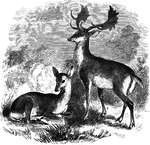
Common Deer
"Is a smaller, feebler, and more common place in its character than the red deer." — S. G. Goodrich,…
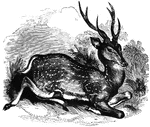
Axis Deer
"In size and general form it nearly resembles the common fallow-deer. The skin is at all times of a…
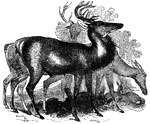
Male American Deer
"It is about the size of the European fallow-deer, and resmebles it in temper and character; the color…

Female American Deer
"It is about the size of the European fallow-deer, and resmebles it in temper and character; the color…
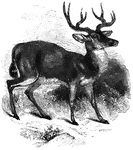
Mule Deer
"Is between the common deer and the American elk in size. Its horns are round and twice forked; the…

Gauzu-Viva
"Is a delicate little deer, only twenty-six inches in length. its aspect is said to resemble that of…
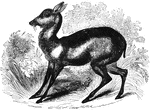
Musk Deer
"Resembles the roebuck in size and form; the color is a rusty gray, in some cases wavy; the female less…

Napu Musk Deer
"Is two feet long and nine inches high; the eyes large and brilliant; the tail short; the general color…
Long Point
Long Point and vicinity. This little sketch was taken from the steam-boat , near the south end of Long…
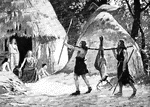
Germans
"Early Germans. These German ancestors of ours, for so we must consider them, since the chief element…

Rescue of Iphigenia
"When she was about to be slain at the altar, Artemis intervened and carried her off in a cloud to be…
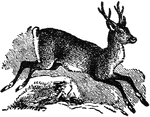
Roebuck
"A Roe (Capreolus caprea) is a small species of deer inhabiting Europe and some parts of Western Asia.…
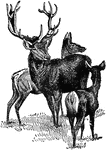
Stag
"Stag, or Red Deer, is a typical species of deer, occurring in the N. of Europe and Asia. It was once…
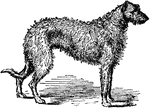
Staghound
"The Staghound is the Scotch deerhound, called also the wolf dog, a breed that is rapidly dying out.…
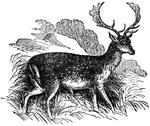
Fallow Deer
A species of deer well known in Britain, being very commonly kepts in parks, as it is also in most parts…

Chamois
Its size is about that of a well grown goat., and it is so agile that it can clear at a bound crevices…

Priestess of Bacchus
"Shows a priestess of Bacchus in the attitude of offering a nebris to Bacchus or to one of…

Egyptian Cattle Doctors
"Cattle doctors are exhibited performing operations upon sick oxen, bulls, deer, goats, and even geese."…
